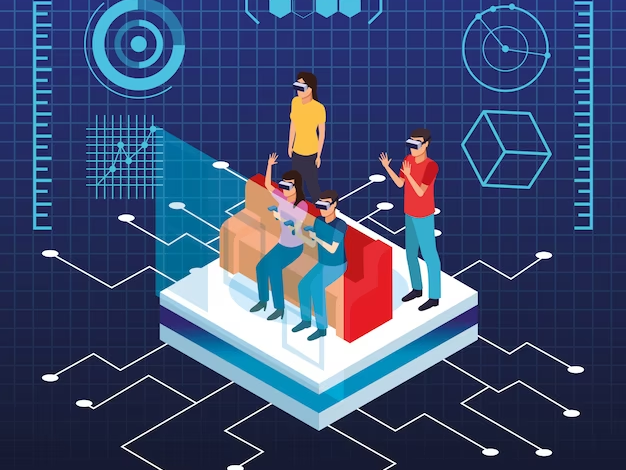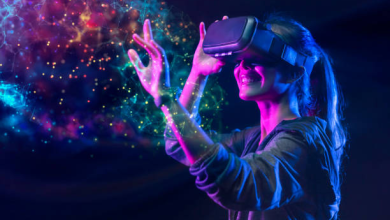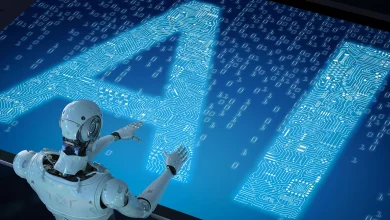Analyzing AR and VR Development in the Education System

A Brief Introduction to AR and AR
Talking about AR and VR in the same space as education can be a bit different and ambiguous. But have you ever thought about how these newly introduced technologies can instantly change the overall education system?
The integration of virtual reality (VR) and augmented reality (AR) in the education system has created an aberration in the learning atmosphere and made it feasible for students to examine energetically and experientially. Even in crises where such procedures were formerly impractical, these technologies help to facilitate them.
These immersive technologies are conducting generously on the market, and in the next years, their value is anticipated to rise. According to a current analysis by MarketsandMarketsTM, the market for AR and VR in schooling was esteemed at USD 2.9 billion in 2022.
AR: Augmented Reality
The incorporation of digital knowledge into a user’s surroundings or video spread in real-time is directed to augmented reality or AR. This cutting-edge technology can incorporate several varieties of media, including sound, films, images, and animations, to develop a holographic imprint.
AR in the education system can be a boon and will help in improving the background and soft skills of the learners.
VR: Virtual reality
On the other hand, VR technology develops an immersive virtual atmosphere that inundates the users in the experience. The public can interact with and transform a three-dimensional globe using VR goggles, developing an experience that nearly corresponds to the truth. VR in the education system can also help organizations prepare their scholars for the genuine worldwide.
Principal Benefits of VR and AR in Corporate Education
The education system has seen a transformation with the help of VR and AR. here are some benefits of it in corporate education.
- VR Simulations for an Immersive Learning Environment
With the use of VR simulations, students can fully immerse themselves in a virtual setting. There is no need for a mouse or keyboard for interaction or navigation. Students can interact with a 3D production line to practice and assess their knowledge. VR simulators’ realistic navigation facilitates practical learning more effectively.
- Active Engagement Promotes the Development of Skills and Knowledge
Implementing what you learn improves how proficient you are at using those talents. Numerous studies indicate that using AR in the education system can help combine learning with practical application. Information retention benefits more from active involvement, such as hands-on practice. From other learning strategies, such as talks, lectures, reading, or audio-visual learning. In comparison to the 5%, the retention rate for hands-on practice is roughly 75%.
- Virtual Classrooms without any Boundaries
Because of these technologies’ unique capabilities, educators and administrators are quickly becoming more and more interested in immersive solutions. Solutions utilizing AR/VR have the potential to completely replace traditional classroom instruction, replace it in part, or even supplement it.
Their most popular use right now in K–12 environments is to improve in-class learning. For instance, with AR technology, teachers can take their pupils on simulated trips across the world or even let them interact with 3D models. With the help of e-learning app development solutions, students can reach out for valuable solutions without caring for anything.
Schools are also incorporating AR/VR solutions into blended and online learning initiatives. The COVID-19 epidemic highlighted the significance of having instructional resources.
- A vast platform to Communicate and Exchange Ideas
Through the passive involvement of VR in the education system, immersive technologies give students the chance to participate in online learning activities. Using a common virtual platform, they can communicate in real time with their instructors and classmates.
Students can, for instance, virtually hang a painting on their wall or place an artifact in their living room thanks to mobile augmented reality. Similar to this, laboratories that use AR/VR enable students to conduct practical experiments. Even when they are not physically present in a lab or classroom with the necessary tools.
Additionally, a key advantage of the most intense VR in education system experiences is the decrease of distractions during remote learning. Students are able to maintain their full attention during class because of this.
- Updated tools and Technology
Technologies like augmented reality and virtual reality development solutions offer potential tools for involving kids with cognitive or learning difficulties like dyslexia, ADHD, and autism spectrum disorder (ASD). Both a physical classroom setting and a remote learning environment can make use of these tools.
To give an example, VR-based experiences may be helpful in addressing phobias and fears in young people with ASD. By adapting or enhancing conventional learning tools like textbooks or flashcards, AR, on the other hand, has proven useful in supporting children with learning impairments.
- Not Limited to only the Secondary Education System
In higher education environments, immersive technologies like augmented reality (AR) and virtual reality (VR) continue to be extremely beneficial. These technologies are being used more and more in the classroom by academics at colleges and universities working in a variety of fields.
More than two-thirds of higher education institutions have integrated AR/VR solutions totally or partially. Around a third are actively testing these technologies, according to a 2018 poll.
Many academic institutions have also created venues specifically for AR/VR devices, giving students and staff a platform to investigate new technologies and produce their own material. These specialized labs provide new options for students and educators to investigate the potential of immersive learning.
- Scenario-based Stimulations
An essential complement to career and technical education can be immersive learning, which includes augmented reality (AR) development solutions. These tools give students the opportunity to strengthen their abilities through experience learning and are quite similar to scenario-based simulations. The cost and risk reduction that these technologies offer by doing away with physically demanding field training is an intriguing side feature.
- A Way of Technical Instruction
Students practicing activities like operating or maintaining complex 3D-modeled machinery could be one use case. Before using the actual equipment, this helps them get more familiar with it and more aware of their safety. Students are better prepared to use these and other emerging technologies in their future professional settings thanks to these immersive tools, which are made for technical instruction.
Must Read: AI in Software Development: Explore Opportunities & Challenges
Conclusion
Moving forward, it is critical to ensure that teachers have the knowledge and skills necessary to integrate AR/VR technologies. Also, need understanding their lesson plans and to provide opportunities for creating pertinent content. Do necessary research about safety and productivity, and enable content creation in order to promote more uniqueness in this field.
FAQs:
- What effects do augmented reality (AR) and virtual reality (VR) have on education?
Ans: Through immersive and interactive learning methods, VR and AR improve students’ understanding of challenging material. Particularly with VR, learning may be made more accessible and interesting by helping students overcome many common learning barriers. All things considered, VR and AR will improve knowledge-based applications across the board.
- What role will AR and VR play in education in the future?
Ans: The AR/VR industry growth predictions are extremely outstanding, according to a study by IDC. The market, which was valued at 16.8 billion USD in 2019, is anticipated to grow significantly and reach over 160 billion USD by 2023. These numbers strongly suggest that AR has a bright future in influencing instructional strategies.
- How can augmented reality improve the quality of instruction and learning?
Ans: A recent technical development called augmented reality (AR) development solutions combines digital information like 3D visuals, sounds, and texts with the real environment around us. When used in a learning environment, AR helps students absorb a subject more effectively by creating a fun and immersive learning experience.
- Why are virtual classrooms advantageous over traditional classrooms?
Ans: A growing trend in education is the use of online learning platforms because of their improved accessibility. With this choice, learners can take pauses from their work at set intermissions to go to class. This ease extends to commuters who can learn while traveling to and from their place of employment on public transit, as well as during a lunch break. Simply put, this amount of flexibility is not available in traditional schools.



